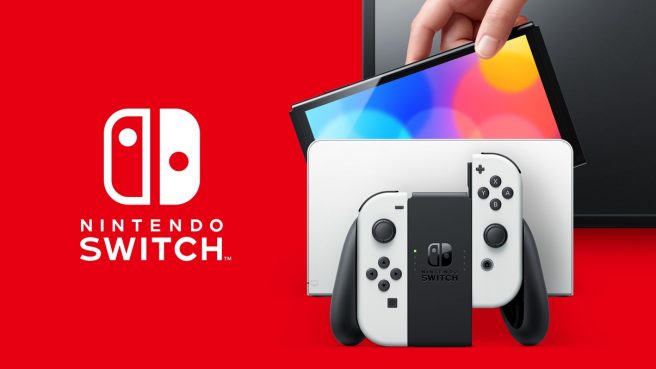Nintendo explains how the Switch OLED came to be
We’ve seen the original Switch, the Switch Lite, and now the Switch OLED. Everyone will be able to pick up the system as of tomorrow, October 8.
In an official interview published by Nintendo today, key developers behind the console spoke about the console’s origins. Ko Shiota, the head of the Technology Development Division, as well as Toru Yamashita of the Technology Development Department both weighed in.
Here’s what the two shared:
First of all, what motivated you to develop Nintendo Switch – OLED Model?
Yamashita: In the early stages of development of the Nintendo Switch system, we were considering the development of the hardware variations, and our idea was to expand the Nintendo Switch platform in various ways. Therefore, we were thinking of releasing a new model of Nintendo Switch at some point, after the first release of Nintendo Switch. However, at that time, we hadn’t decided exactly what specific functions we would update, and while we were developing Nintendo Switch Lite, we were hoping to offer a new model not only for people who are buying one for the first time, but also for those who are thinking of buying an additional model after purchasing the original.
Shiota: As Mr. Yamashita mentioned, I also wanted to launch a new model of Nintendo Switch. However, at the conceptual stage, we didn’t have any specific ideas about what features we wanted to include. Since the release of Nintendo Switch in 2017, we came up with various ideas, did some technical testing, gathered those results, and finally created the new model that you see now, which we are finally able to launch. The backstory is during the trial-and-error period, we considered some different technologies, and by referring to how our customers played with Nintendo Switch, we decided on the ideas and technologies adopted in the new model.
You said that at first, you had not decided what to include in the development of the new model, but while you were coming up with ideas for features to be included, did you have any criteria for selecting them?
Shiota: During the process of deciding what to include in the new Nintendo Switch – OLED Model, we referred to the reactions of our global customers who were playing Nintendo Switch. Fortunately, I believe that the concept and experience of Nintendo Switch has been well received. So rather than creating something completely different, we decided it would be better to keep the current form and deliver a better experience. In other words, we wanted to “refine” the existing functions and design. That perspective led to the technical choices we ultimately made.
Yamashita: Because we wanted to “refine” what we already had, we made sure that we wouldn’t add any new features that couldn’t be used with previously released software. For example, if we added a new button or function to the Joy-Con controllers, you wouldn’t be able to use it in previously released software or games, unless we updated them as well. Instead of doing that, we thought it would be better to improve and enhance the functions that our customers are currently experiencing.
So the idea was to further enhance the satisfaction of the gameplay experience while keeping the existing functions.
Shiota: Yes, that’s correct.
Yamashita: It’s not that we didn’t have some customers asking us for different functions or features. Fortunately, however, I felt that the gameplay using the current Joy-Con controllers and the gameplay in the three modes of Nintendo Switch—TV mode, tabletop mode, and handheld mode—were widely accepted. So we thought if we could introduce new features based on the existing playstyle without changing it and make gameplay more captivating, we might be able to bring Nintendo Switch to even more people.
As you just mentioned, you listened to the customers’ input and decided how to improve the product, but is this unique to Nintendo Switch – OLED Model? Or is this something that Nintendo has been doing for video-game consoles in the past?
Shiota: Dedicated video-game consoles, once released into the market, have a relatively long product life cycle until the production is finally over. Therefore, we continue to provide products with the same functions to our customers over the years. Also, continuing to provide products with the same functions during that long period means that we have the opportunity to hear much more input from our customers. Nintendo developers have a strong desire to always respond to the customers’ feedback candidly, and technological progress also occurs during the product life cycle, so by combining that with the customers’ feedback, we are able to improve the product even after its release.
Such efforts for improvement have been ongoing, not just for Nintendo Switch – OLED Model, but also for past platforms, and we have considered many ideas and technologies for improving even the current models. In fact, there are many examples where we adopted such ideas and technologies to make improvements before the launch of this new model. Therefore, I think it is the “destiny” of gaming consoles that improvements will continue even after the launch.
